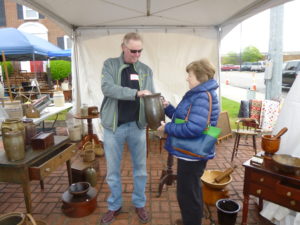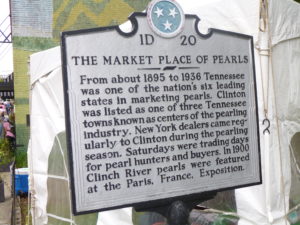
Over the centuries, nearly all American Presidents have taken time out to fly fish. In more recent years, President Eisenhower took every opportunity to fish, likewise, Ronald Reagan, and both President Bush’s do. The American Museum of Fly Fishing in Manchester, Vermont showcases fly fishing tackle belonging to several American Presidents and high profile personalities that were part of all venues in American culture of the 20th Century.
As my wife Barbara and I are both fly fishing instructors and avid anglers ourselves, we have visited a few of the fine rivers that slice and meander through the Maryland landscape, such as the Casselman, the Savage and the upper Potomac to name a few. We also traversed America in an RV fly fishing as we traveled in some of the most scenic areas such as Yellowstone, Rogue River and the Snake, to name but a few of the many dozens we flicked a feather or two on. Fly rods in all the past centuries before the 20th were made of wood, some were made of metal. They were mostly hand-crafted out of various woods and bamboo.
Some of the finest fly rods and reels were made in the last few centuries in Scotland and France. Reels from the Hardy Brothers in England are highly prized today and old ones are also highly collectible at stiff prices. This is true of American makers such as Orvis with a long history of providing the CFO reel (Charles F. Orvis) to fly anglers for well more than a century and half now. Orvis Headquarter store is also located in Manchester, Vermont but many of the same fly fishing products and specialized accoutrements to the anglers art are located in Frederick, Maryland. It is a fine store that has everything you’d need for anything to do with fly fishing.
Today with the major degradations to our natural places in the past century as the Industrial Revolution accelerated, dams and industrial wastes pouring into all major and minor rivers, overfishing, development close to or on our waterways, is one huge reason hatcheries and a put & take program is now an important part of the trout fishing seasons in Maryland, the Virginias, Pennsylvania and most of these United States. The ideal of course is that trout and other game fish reproduce enough to sustain a more natural fisheries situation. However, far too many people want fish, so state & federal hatcheries oblige. If not, there would be no fishing licenses, gear-sales, or tourism dollars for the local economies that can offer very little else than a jumping off point for a great outdoors adventure. And the number of anglers and hunters is also now diminishing from a high of just a few years ago.
We visited Dusty Wissmuths Fly Fishing School over at White Tail Ski area and enjoyed sitting in on his indoor fly craft lore and his outdoor fly casting clinic. Stehanie Stephan Zaklin and her husband Kuy Kendal from DC were intent on learning all they can about fly fishing. “ I like the conservation aspect of fly fishing. As a couple we tend to move move a lot and this is a sport that is challenging and new life sport for us” said Zaklin. Zaklin and Kendal have friends that fly fish, but they never had a chance to try it. So they are taking lessons along with another couple Theresa and Ali Zandi from Ashburn, VA. who independently found Dusty’s school to their liking as well. Both couples enjoyed learning the fundamentals of fly casting which initially just takes a certain amount of practice time. Some pick up on the concept of what goes up must come down as the smooth arcing of the fly rod creates horizontally as well as in any configuration based on the rod loading up and releaseing the tension in two directions. Once the “feel” is understood than building on the process with practice eventually make for perfect casting.
The art of fly fishing has been a sport of kings down through the ages.
There are hieroglyphic depictions of fly fishing on the walls of pyramids in Egypt. French and English noblemen enjoyed their rights on their own game reserves while their serfs worked their lands. Some of the finest fly rods and reels were made in the last few centuries in Scotland.
Today it is estimated that thousands of Americans enjoy fly fishing as a hobby and escape from their work-a-day lives. The beauty of women’s involvement in fly fishing lies partly in the fact that . . .
- fly fishing is completely “gender neutral”
- fly fishing does not require great physical strength or ability
- fly fishing can be practiced by and at all ages
- and most importantly, fly fishing is a rewarding outdoor activity that can be enjoyed by women, by their children and grandchildren for a lifetime
“Fly fishing is not about providing table fare. It is about the experience…it is the spiritual connection to nature—the melody of the birds, the singing of the trees, and the sunlight dancing on the water. And, of course, it is the poetry of properly casting and handling a fly rod, which is the physical connection from yourself to a whole other world living below the surface.”
~ Rich Kustich, Buffalo Spree Magazine
www.amff.com
The museum serves as a repository for and conservator to a large collection of historic rods, reels, art, literature, and related angling items. Documentation of fly fishing as a sport, art form, craft, and industry in the U.S. and abroad from the mid-16th century to the present. There are also items belonging to U.S. presidents and noted personalities. Activities include demonstrations, classes, and auctions.



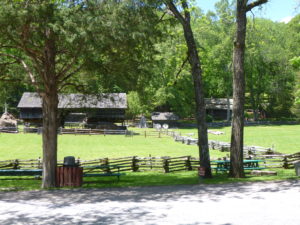

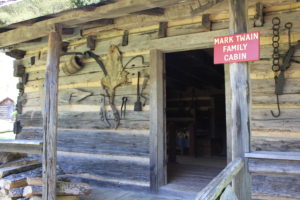
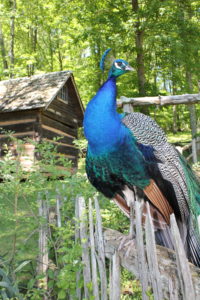
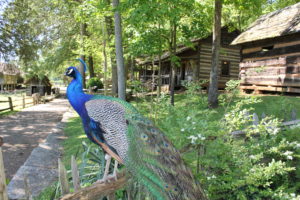
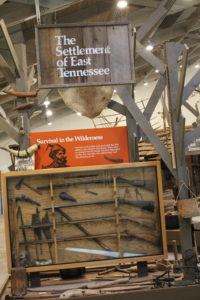
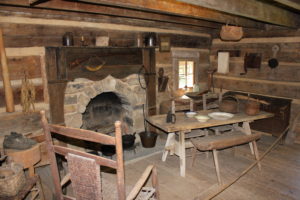

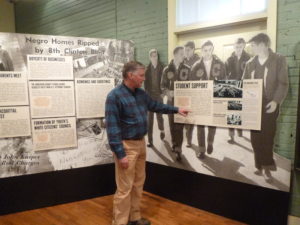
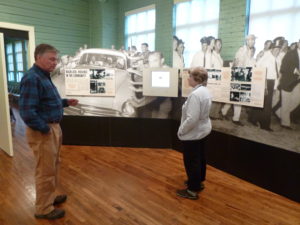
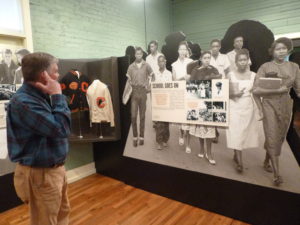
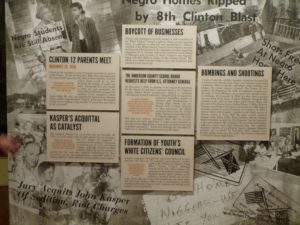
 1950s Period Classroom
1950s Period Classroom The story begins with the community’s initial constructive approach to the historic event…then the arrival of outsiders with anti-integration propaganda… a week of growing violence… the formation of a home guard… the arrival of the national guard and martial law. Unlike the stories in Arkansas and Alabama, both the city and state governments supported the “Law of the Land”, represented by the desegregation ruling. The city’s white religious and economic leaders, such as the Rev. Paul Turner, a local Baptist minister, allied with the black students and their families, offering them protection in integration and challenging those they led to do the same in the face of rising violence. At one point, Rev. Turner was physically attacked for his heroic stand. The African-American community on Foley Hill became a rallying point for Clinton in the struggle for equal rights for all citizens. In retaliation, white supremacists bombed the high school in 1958, destroying the building, but not halting the progress of equality. Instead, the Anderson County community, citizens and students from Clinton and Oak Ridge refurbished an abandoned elementary school in Oak Ridge- and Clinton High School was back in session in one week, still integrated.
The story begins with the community’s initial constructive approach to the historic event…then the arrival of outsiders with anti-integration propaganda… a week of growing violence… the formation of a home guard… the arrival of the national guard and martial law. Unlike the stories in Arkansas and Alabama, both the city and state governments supported the “Law of the Land”, represented by the desegregation ruling. The city’s white religious and economic leaders, such as the Rev. Paul Turner, a local Baptist minister, allied with the black students and their families, offering them protection in integration and challenging those they led to do the same in the face of rising violence. At one point, Rev. Turner was physically attacked for his heroic stand. The African-American community on Foley Hill became a rallying point for Clinton in the struggle for equal rights for all citizens. In retaliation, white supremacists bombed the high school in 1958, destroying the building, but not halting the progress of equality. Instead, the Anderson County community, citizens and students from Clinton and Oak Ridge refurbished an abandoned elementary school in Oak Ridge- and Clinton High School was back in session in one week, still integrated. Interactive screens will allow you to see the Clinton 12 and others in person and hear their recollections and reflections from interviews by Keith McDaniel, producer of the award winning Clinton 12: A Documentary, which was narrated by James Earl Jones.
Interactive screens will allow you to see the Clinton 12 and others in person and hear their recollections and reflections from interviews by Keith McDaniel, producer of the award winning Clinton 12: A Documentary, which was narrated by James Earl Jones.


